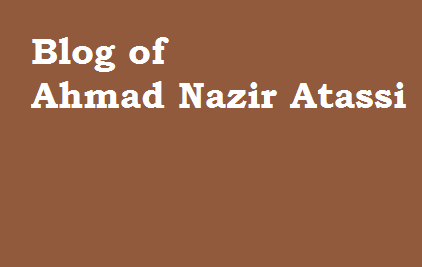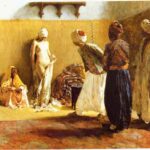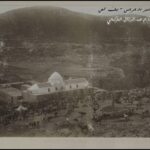Older blog 25 September, 2009
I arrived
in Istanbul on July the 3rd, 2008. I cannot believe it’s been more than a
year now. I also cannot believe that I got so much work done in ten
days.
More than a month of meticulous planning paid off, all thanks to the internet.
I
got off the airplane, looked for the metro, bought a ticket, and was in
my hotel room (which I reserved over the internet) at Bayezit within an
hour. I had a detailed map of the area (thanks to mapquest) but got
lost trying to find the names of the narrow streets branching out from
the main street where the tramway station was.
I
intentionally chose a hotel in the heart of old Istanbul so I can be
within a walking distance of the Ottoman Archives and the Suleymaniye
Library. It is a nice and clean hotel with a great breakfast service.
To
my pleasant surprise, I found a revamped old city, ready to receive
tourists and suck them dry of their Dollars or Euros. A dollar changed
for about three quarters of a new Turkish lira (YTL). My ten-day budget
was used up within five days, but it was worth. I was so excited to find
the Ottoman archives that I forgot to take pictures of the building and
its surroundings. May be I was also scared of the beefy secret service
agents guarding the building because it was located within a government
complex. But I took plenty of pictures of the Suleymaniye Library.
The
library was within the mosque complex but it was not adjacent to the
mosque. You can actually stand by the library entrance and see the giant
minarets of the mosque in front of you right at the end of the narrow
alley.
There
are so many Ottoman mosques in Istanbul that after a while they start
looking alike. In fact the design was pretty much the same, but the
scale differed. There was a cookie-cutter feeling to many of them. I
guess the competition among the Ottoman elite was not a matter of style
but of size. Sultant Ahmet mosque
started looking like Bayezit Mosque; and Nuruosmaniye Mosque
started looking like Shehzadeh Mosque
The truth of the matter is, they all look like the older masterpiece: The Hagia Sophia.
This
is the dirty little secret of the victorious Ottoman Empire. Istanbul
built on top of the Constantinople’s glory and did not replace it. Of
course a historian should not leave Istanbul without paying respect to
the master architect who built its most impressive monuments, Sinan.
This is his moseleum
and this is his tomb (one of them at least).
Later
in the 19Th century, the Ottoman elite started looking toward the West
for inspiration. The result was these gorgeously renovated urban
dwellings, like this house in the area of Sultan Ahmet
and these exquisite smaller town houses around Hagia Sophia
However, one should not forget that Istanbul has another face, a
charming but much less wealthy face. You do not have to be a savvy
tourist to find it. It suffices to be courageous enough to get lost in
the city and to walk for hours through all sorts of neighborhoods in
order to see these poor but peaceful houses surrounding this serene
garden that only exists in places like Paris or Istanbul, courtesy of
old times.
Just in case you thought that the Turkish economic boom of the 21st
century (ironically brought about by an Islamist party in power) had
realized Ataturks obsession of joining Europe, these images will bring
you quickly back to the reality of those who were not included in the
“Flat World” as Thomas Friedman loves to call it.
Finally, here are the two pictures that broke my heart: The first
because I could not afford it (I love sweets, but they were very
expensive) and the second because I saw my children in her but could not
help her, I felt depressingly helpless. Both pictures were taken in the
same location.
Gule Gule Istanbul, until next time.


 al-Jumhuriyya
al-Jumhuriyya




